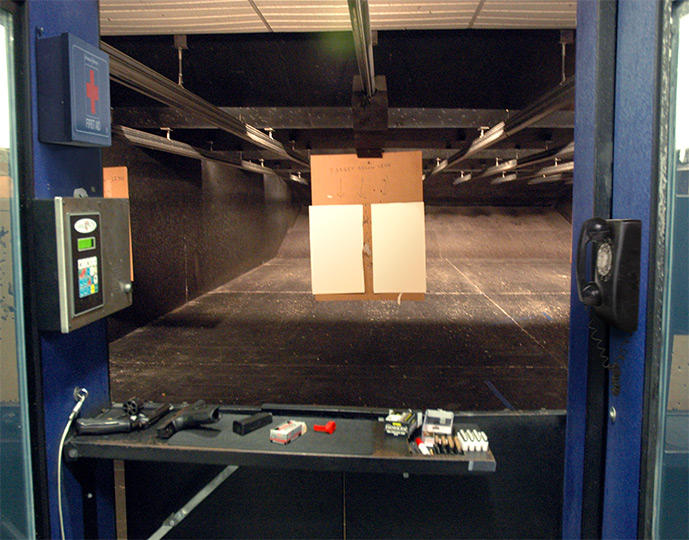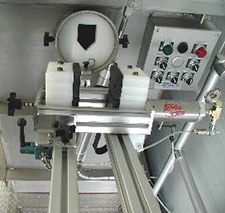Home | Glossary | Resources | Help | Contact Us | Course Map
Archival Notice
This is an archive page that is no longer being updated. It may contain outdated information and links may no longer function as originally intended.
Firing Facilities
Firing facilities typically address three types of requirements:
- An indoor range for firearms function testing, including remote test firing
- Bullet recovery system for obtaining known standards for comparisons with evidence bullets
- Access to a range for testing requiring longer distances
Safety Requirements
Safety is critical in all phases of firearms examination crime scene, laboratory, firing range, and bullet recovery facility. Each forensic firearms laboratory is different and has firearms safety protocols developed for that particular laboratory.
Read the section on firing ranges in the safety module.
Indoor Ranges
An indoor range facility dedicated to laboratory use is ideal for the efficient operation of a forensic firearms unit. Generally, these facilities provide one or two shooting positions in a confined space. Indoor ranges typically have an automated overhead target placement and retrieval system.
The impact area of these ranges requires some type of bullet trap arrangement to prevent back spatter or a ricochet, as well as to mitigate airborne lead. Some provision must also be made to allow for the periodic removal of accumulated bullet fragments.
Ventilation is important in indoor range facilities, but is not always an easy problem to solve. The key requirement is that sufficient air moves across the shooting points, facilitating the removal of airborne pollutants.
Sound and vibration mitigation is a requirement, especially for firing ranges with close proximity to personnel and sensitive equipment. Sound-deadening materials are typically part of the solution; sound travels through ventilation systems and construction voids.
Additional Online Courses
- What Every First Responding Officer Should Know About DNA Evidence
- Collecting DNA Evidence at Property Crime Scenes
- DNA – A Prosecutor’s Practice Notebook
- Crime Scene and DNA Basics
- Laboratory Safety Programs
- DNA Amplification
- Population Genetics and Statistics
- Non-STR DNA Markers: SNPs, Y-STRs, LCN and mtDNA
- Firearms Examiner Training
- Forensic DNA Education for Law Enforcement Decisionmakers
- What Every Investigator and Evidence Technician Should Know About DNA Evidence
- Principles of Forensic DNA for Officers of the Court
- Law 101: Legal Guide for the Forensic Expert
- Laboratory Orientation and Testing of Body Fluids and Tissues
- DNA Extraction and Quantitation
- STR Data Analysis and Interpretation
- Communication Skills, Report Writing, and Courtroom Testimony
- Español for Law Enforcement
- Amplified DNA Product Separation for Forensic Analysts



